Abstract
In chicken pot pies, it was not possible to promote the growth of appreciable numbers of staphylococci under any condition of defrost. The pies spoiled under the same conditions, however. In macaroni and cheese dinners, tremendous numbers of saprophytic bacteria developed, but only after extended incubation at room temperature in which even spoilage was carried to an extreme. Under these conditions, staphylococci also multiplied vigorously. At the extreme temperature of 37 C, rank spoilage of such an advanced state as to render the product completely inedible was reached in less than 24 hr. Staphylococci grew very well under these extreme conditions.
Full text
PDF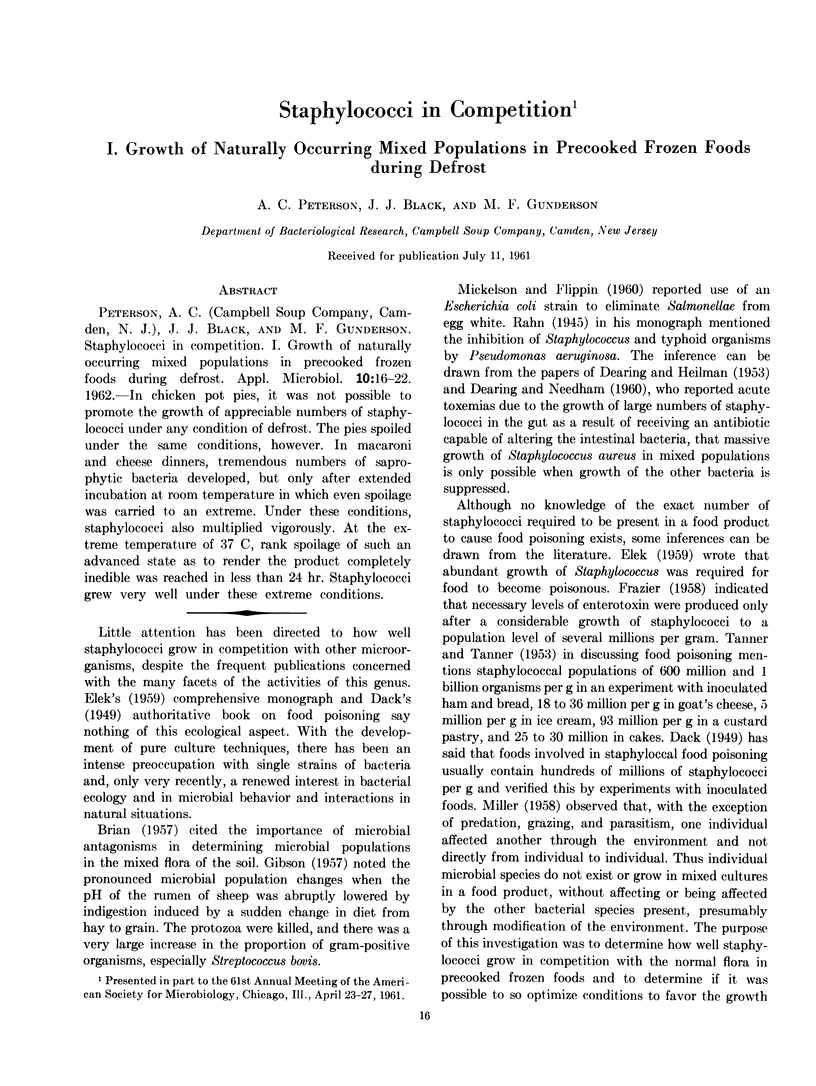
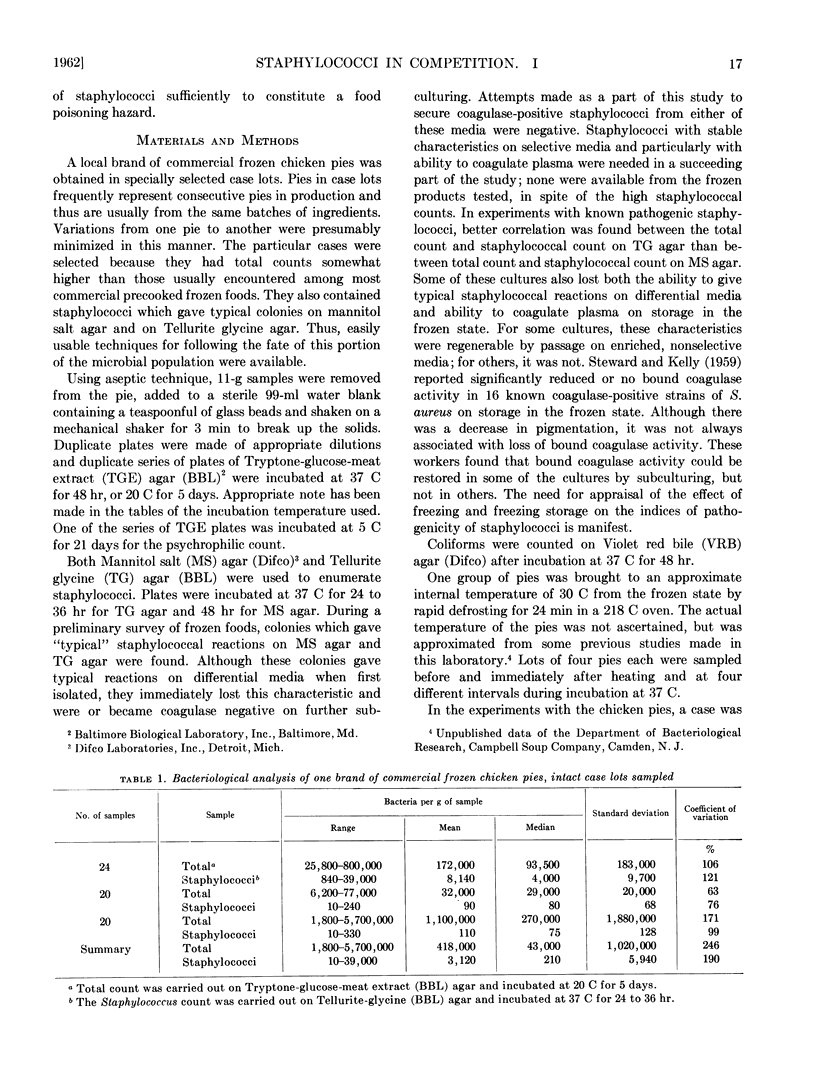
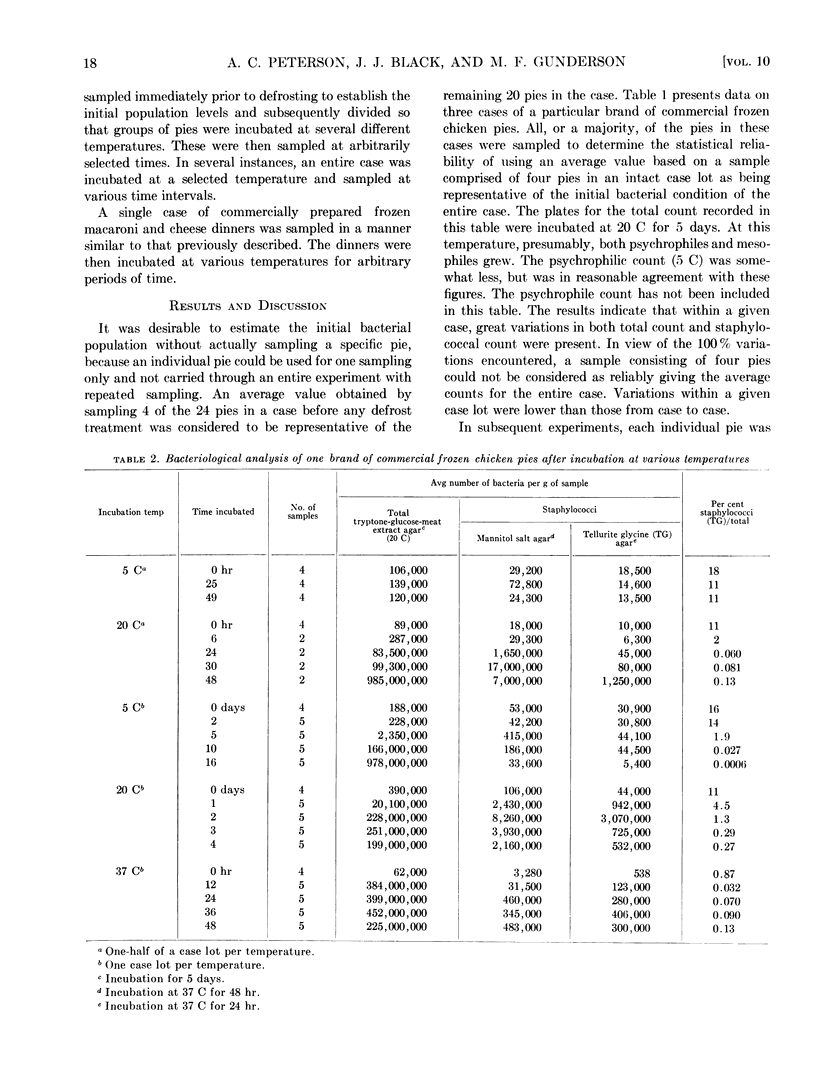
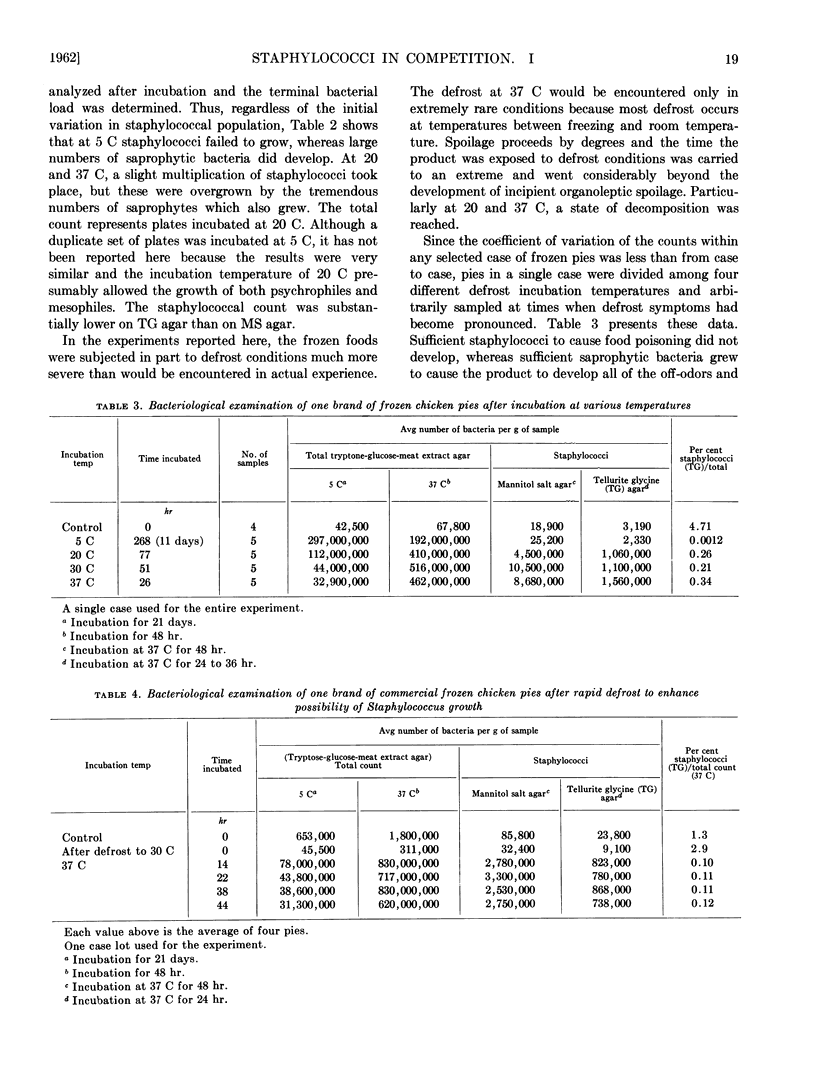
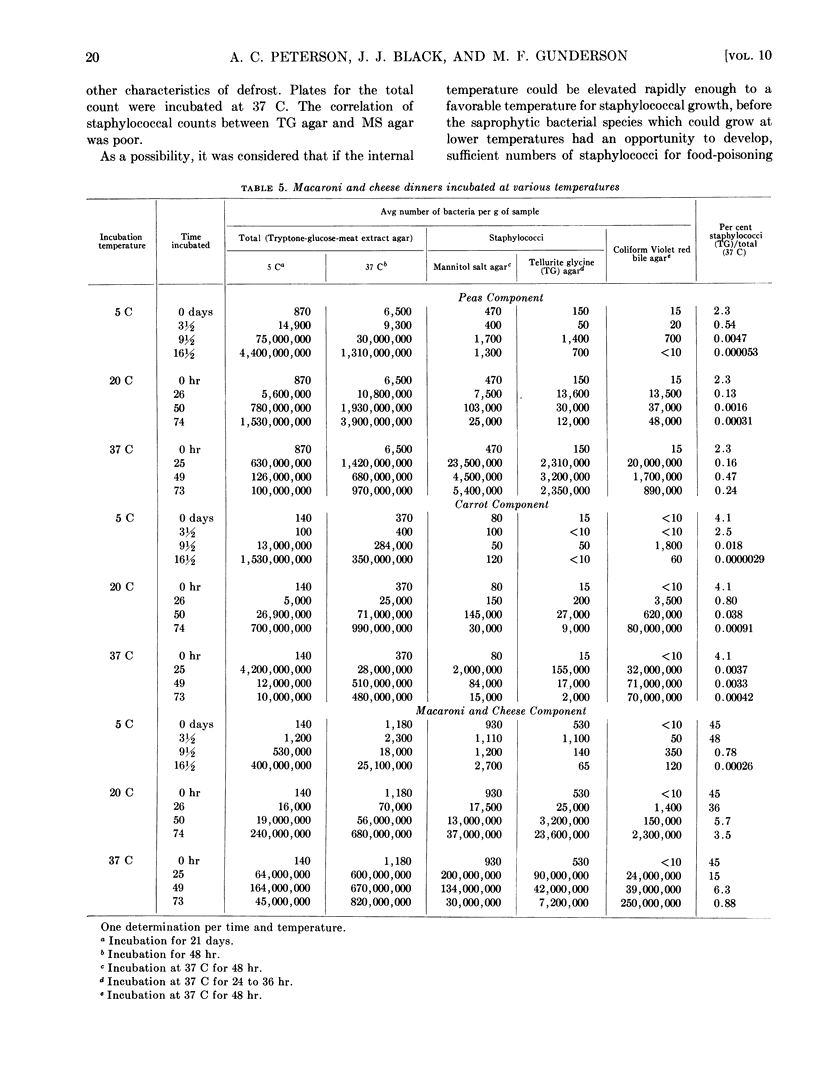
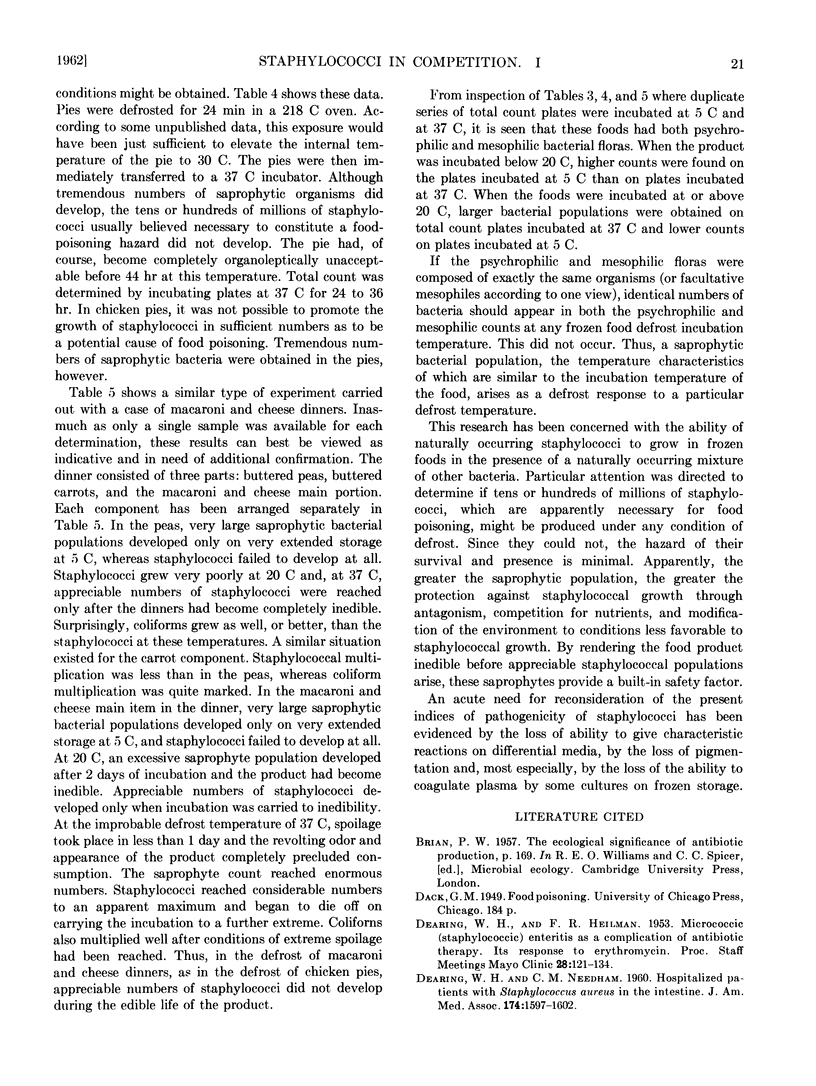
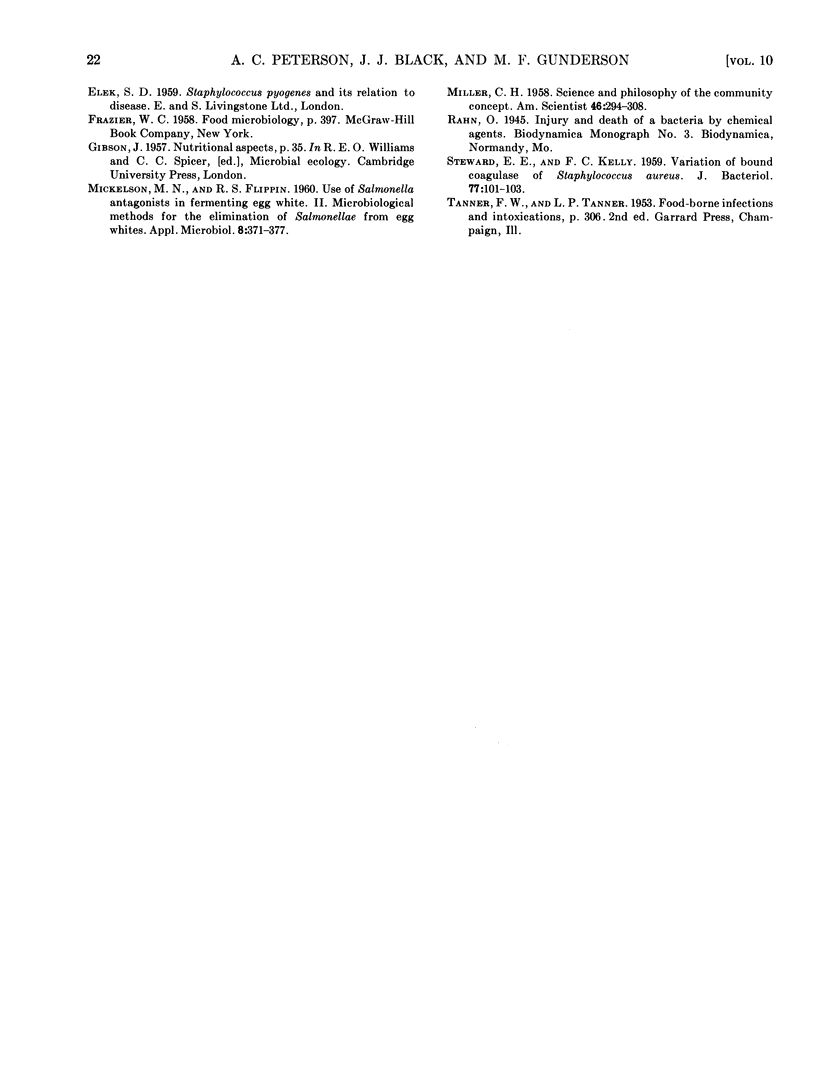
Selected References
These references are in PubMed. This may not be the complete list of references from this article.
- DEARING W. H. Micrococcic (staphylococcic) enteritis as a complication of antibiotic therapy; its response to erythromycin. Proc Staff Meet Mayo Clin. 1953 Mar 11;28(5):121–134. [PubMed] [Google Scholar]
- DEARING W. H., NEEDHAM G. M. Hospitalized patients with Staphylococcus aureus in the intestine. JAMA. 1960 Nov 19;174:1597–1602. doi: 10.1001/jama.1960.03030120037008. [DOI] [PubMed] [Google Scholar]
- MICKELSON M. N., FLIPPIN R. S. Use of Salmonellae antagonists in fermenting egg white. II. Microbiological methods for the elimination of Salmonellae from egg white. Appl Microbiol. 1960 Nov;8:371–377. doi: 10.1128/am.8.6.371-377.1960. [DOI] [PMC free article] [PubMed] [Google Scholar]
- STEWARD E. E., KELLY F. C. Variation of bound coagulase of Staphylococcus aureus. J Bacteriol. 1959 Jan;77(1):101–103. doi: 10.1128/jb.77.1.101-103.1959. [DOI] [PMC free article] [PubMed] [Google Scholar]


